In a universe of lines and shapes, interior design is a sensorial narrative, where each choice of colour, texture, and layout tells a different story. The story of your customers. In this vibrant scenario, nature emerges, influencing architects and interior designers to see beyond walls and buildings, seeking the simplicity and complexity of nature as an inexhaustible source of inspiration and quality of life.
“Study nature, love nature, stay close to nature. It will never fail you."
Frank Lloyd Wright, architect
Frank Lloyd Wright's words allow us to understand that nature is not just an aesthetic element in design but a force that can transform spaces into immersive experiences.
It is in this context that the concept of Biophilic Design emerges. This approach, one of the leading interior design trends for 2024, goes beyond mere aesthetics. Biophilic Design seeks to incorporate natural elements into interior spaces, recognizing the deep human need for connection with the natural world. By adopting this concept in your projects, you will not only be shaping areas but also telling visual stories that reflect the intrinsic nature of the human being.
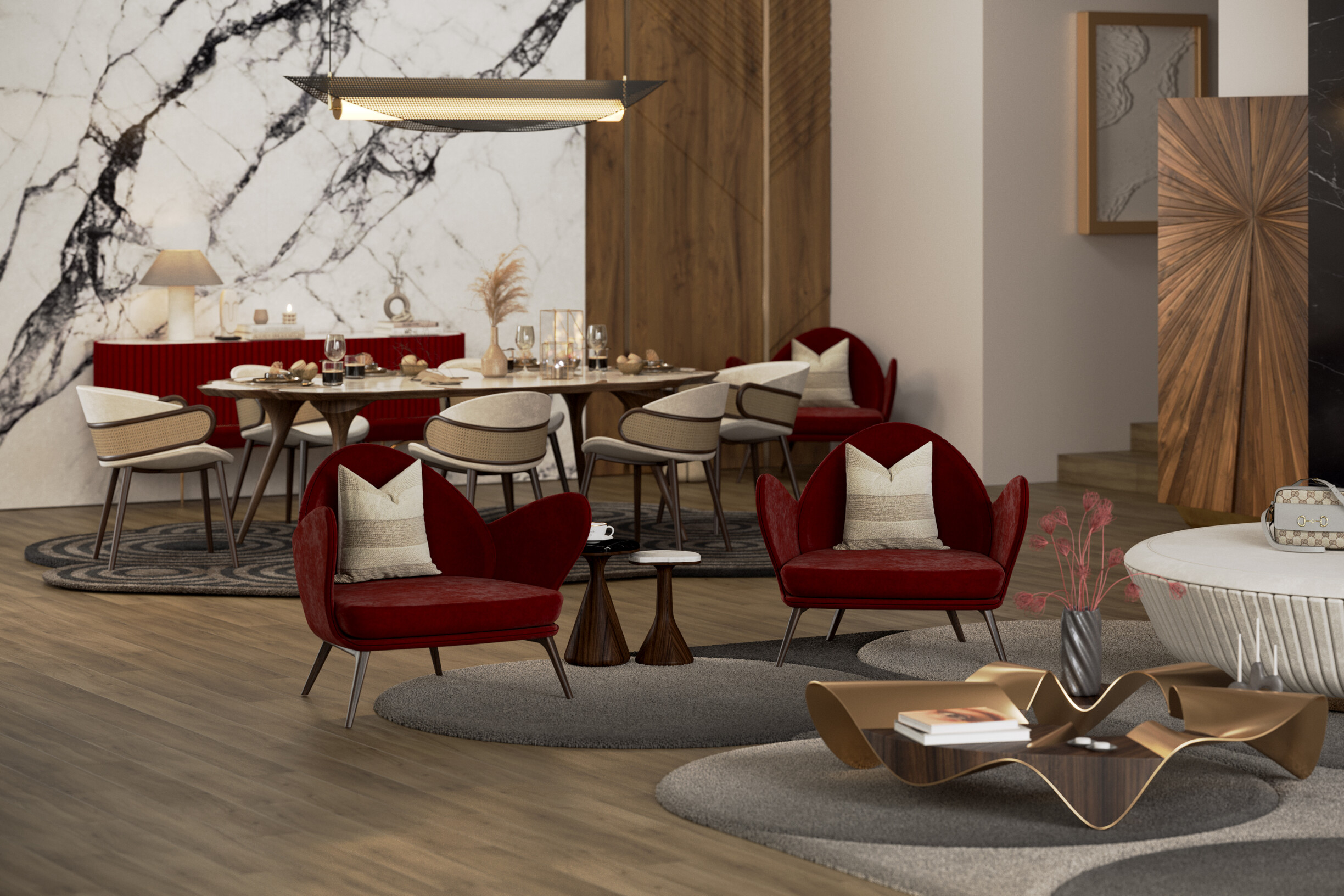
Biophilic Design emerges as a philosophy that aims to reestablish the intrinsic relationship between the built spaces and the natural world.
Derived from the Greek words “bios” (life) and “philia” (love), Biophilic Design is not just an aesthetic trend but a holistic approach that seeks to integrate nature into living spaces, promoting a sustainable balance.

Biophilic Design integrates the natural world into the modern world, creating healthier and more balanced spaces. It is based on the idea that human beings have an innate affinity for nature and, therefore, thrive and have a greater sense of well-being when in contact with natural elements. This approach embeds nature at the heart of interior design, architecture, and urban planning, recognizing the aesthetic value of nature and its positive impact on mental health, well-being, and productivity.
Biophilic Design creates spaces that balance nature with natural light, plants, organic textures, and patterns.
The aim is to maximize the view and visual access to nature, as the natural landscape brings a sense of calm and relaxation to the interiors. To achieve this, you can use large windows, balconies, and open spaces that provide panoramic views and create a sense of continuity between the interior and exterior.
Materials play a central role in the creation and experience of interior design spaces in many ways. In Biophilic Design, the key is choosing organic and sustainable materials, such as wood, stone, and ceramics. This type of material evokes the texture and aesthetics of nature and offers a more incredible tactile and sensorial connection.
GINKGO side table from ALMA de LUCE from Nature Collection is a perfect example of furniture you can use in your biophilic interior design project. These elements add visual interest and reinforce the connection to nature within your interior design.
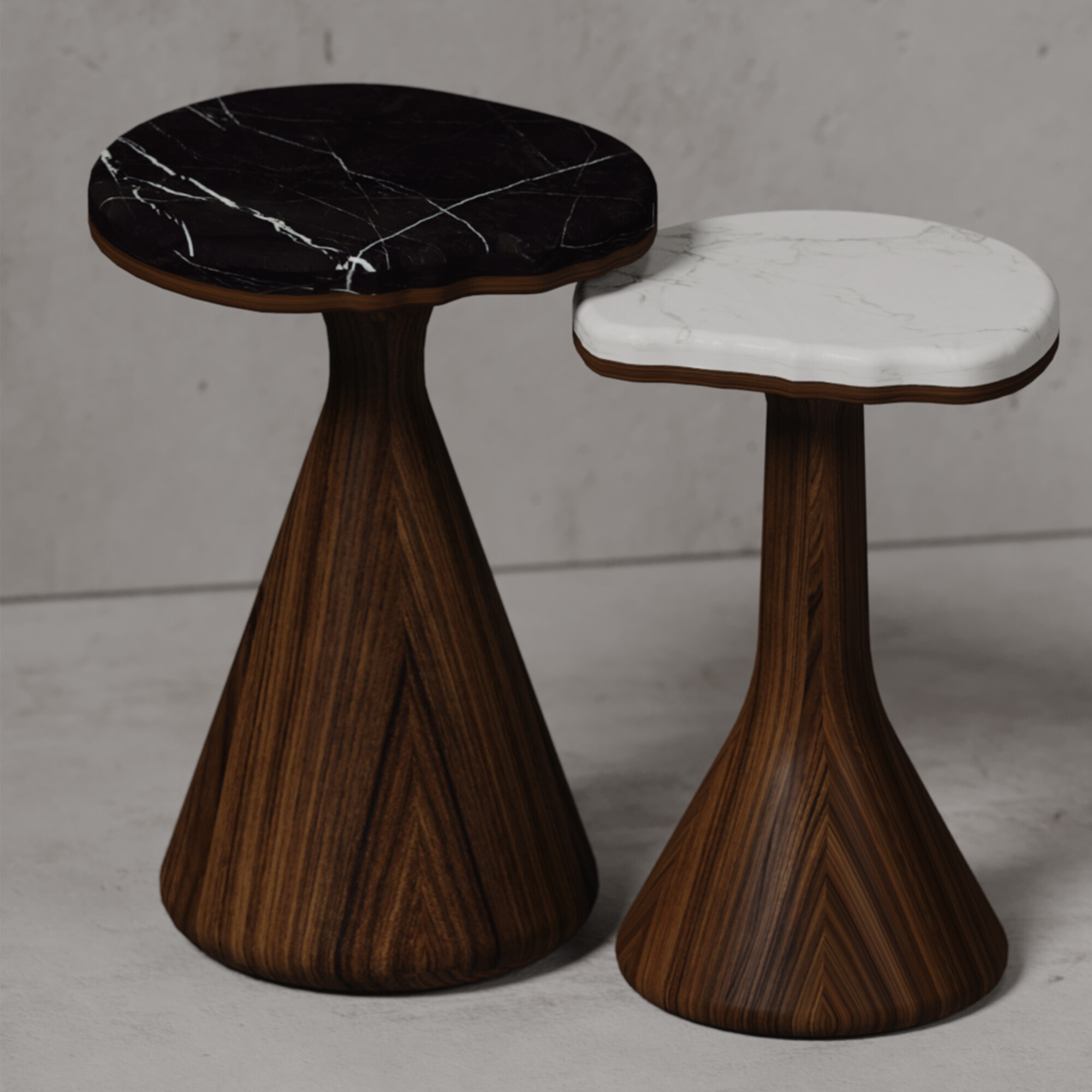
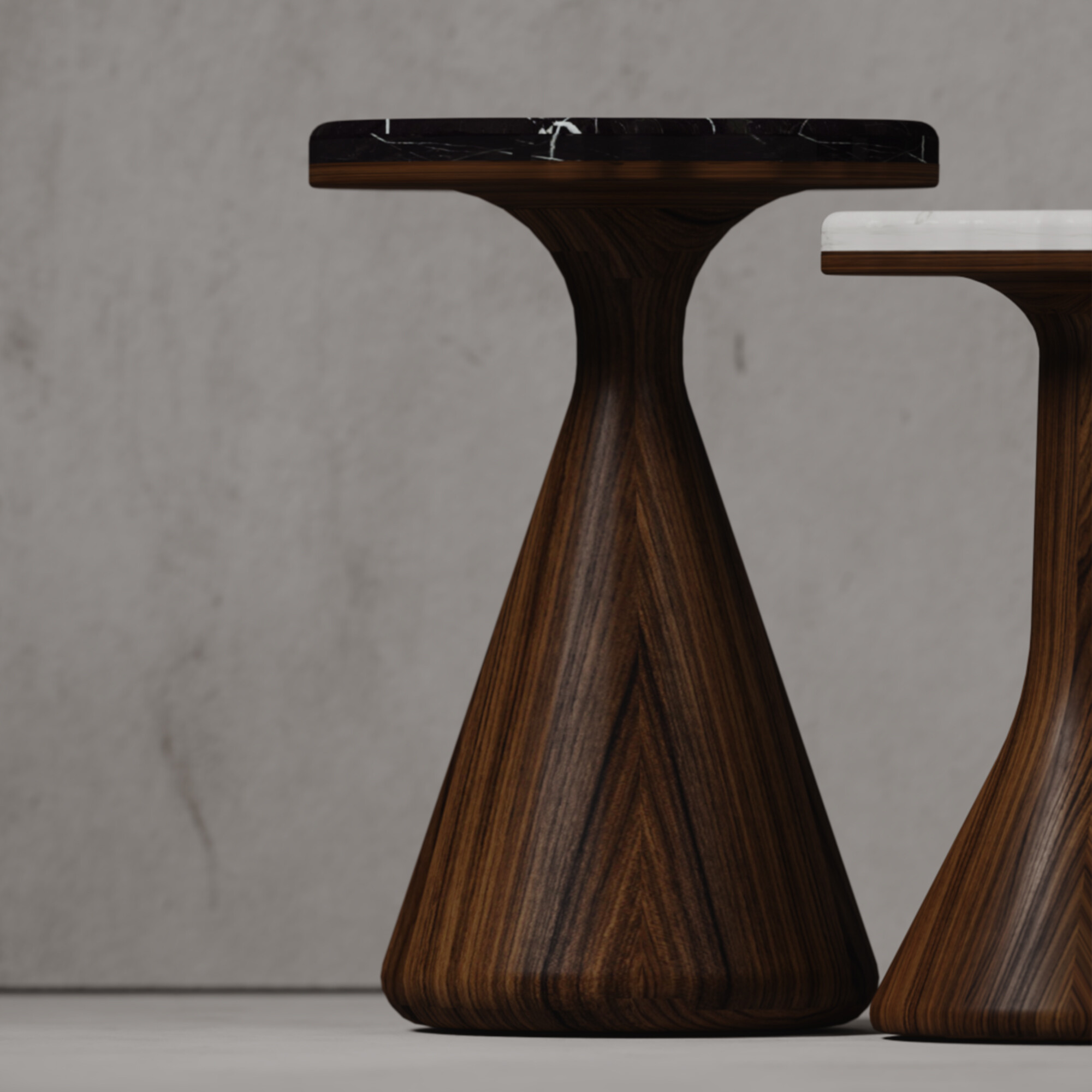
Natural light is one of the fundamental principles of Biophilic Design. Designing spaces that allow abundant sunlight can save energy and create dynamic rooms that follow the natural cycles of the day, positively influencing the circadian rhythm of the inhabitants.
Try to maximize the entry of natural light into a space using large windows and skylights.
Introducing live plants into interior spaces is the most direct way to bring nature into homes. In addition to aesthetic beauty, plants improve air quality and promote a healthier space.
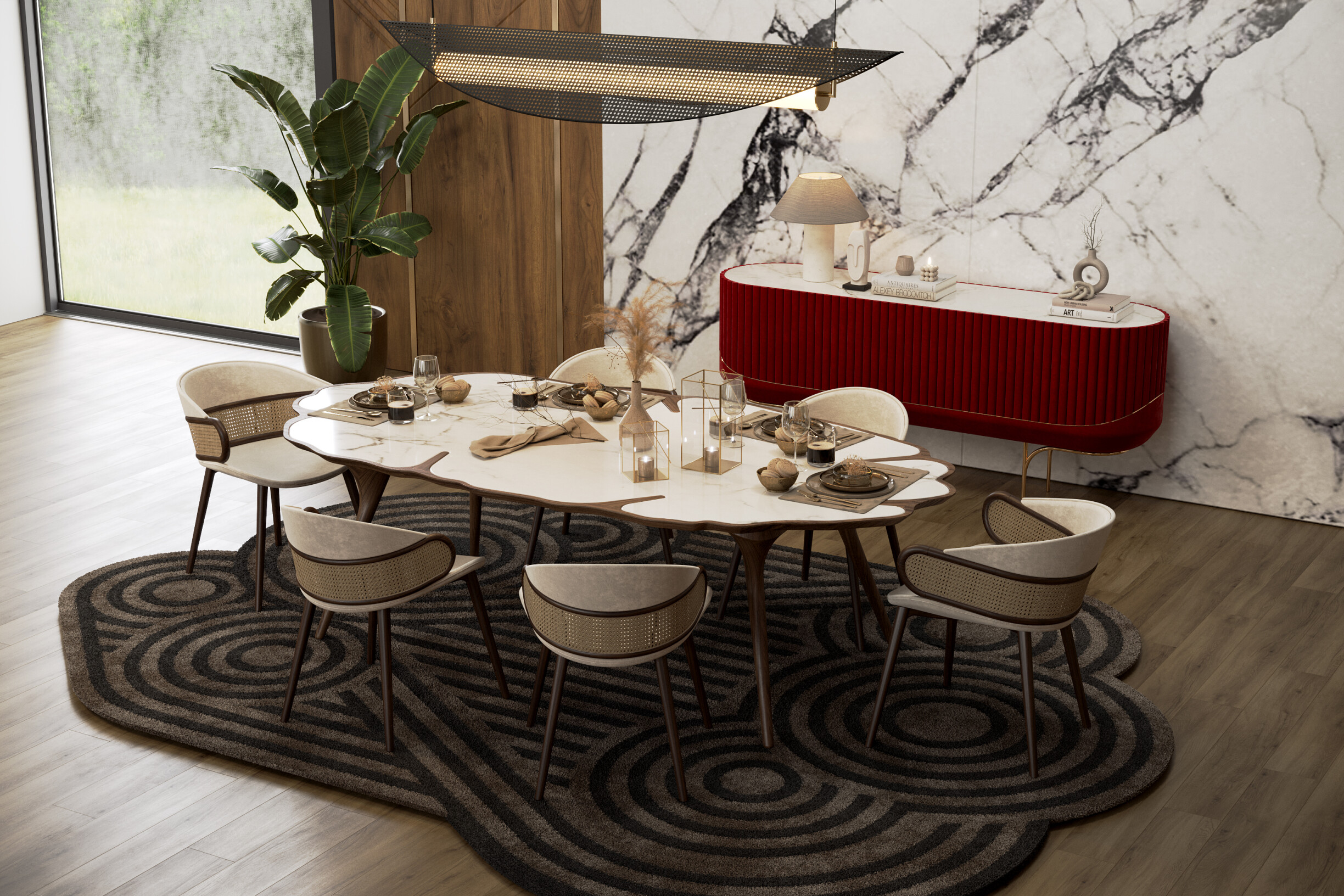
Patterns that mimic natural elements, such as organic geometric shapes or textures inspired by leaves or floral prints, create a feeling of familiarity and comfort, contributing to a visually pleasing aesthetic.
The Antelope Canyon from ALMA de LUCE is a modern rug made from hand-tufted botanical silk, showing you the power of nature and its elegance. The pattern of this rug, whose colours also refer to nature, transports us to the Antelope Canyon in the USA.
Furthermore, textures create a specific atmosphere. For example, natural textures like wood and stone evoke a rustic feel and a more significant connection to nature.
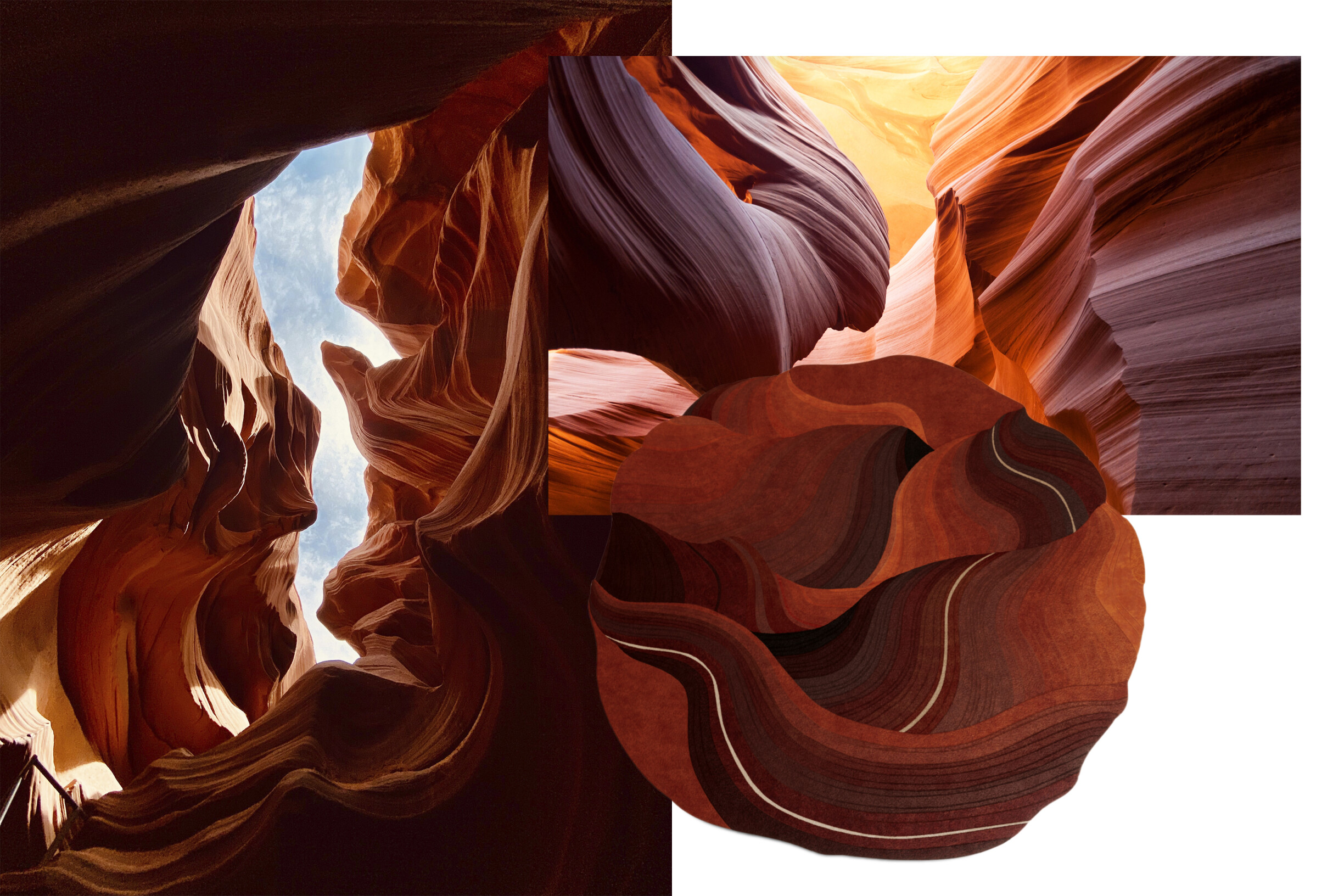
A crucial principle of Biophilic Design is the flexibility and adaptability of spaces to respond to seasonal changes and occupant needs. Therefore, creating areas that can be used in different seasons or mobile elements that allow adjustments, such as modular furniture, is essential.
You can choose modular sofas in a living room or office to guarantee this adaptability and flexibility.
Choosing the right colour palette is one of the most critical decisions in any interior design project. In the case of a project in the context of Biophilic Design, colour selection is even more critical. Colours play a fundamental role in Biophilic Design, as they are visual elements that can evoke emotions and create deep connections with nature.
What are the most used colours in Biophilic Design?
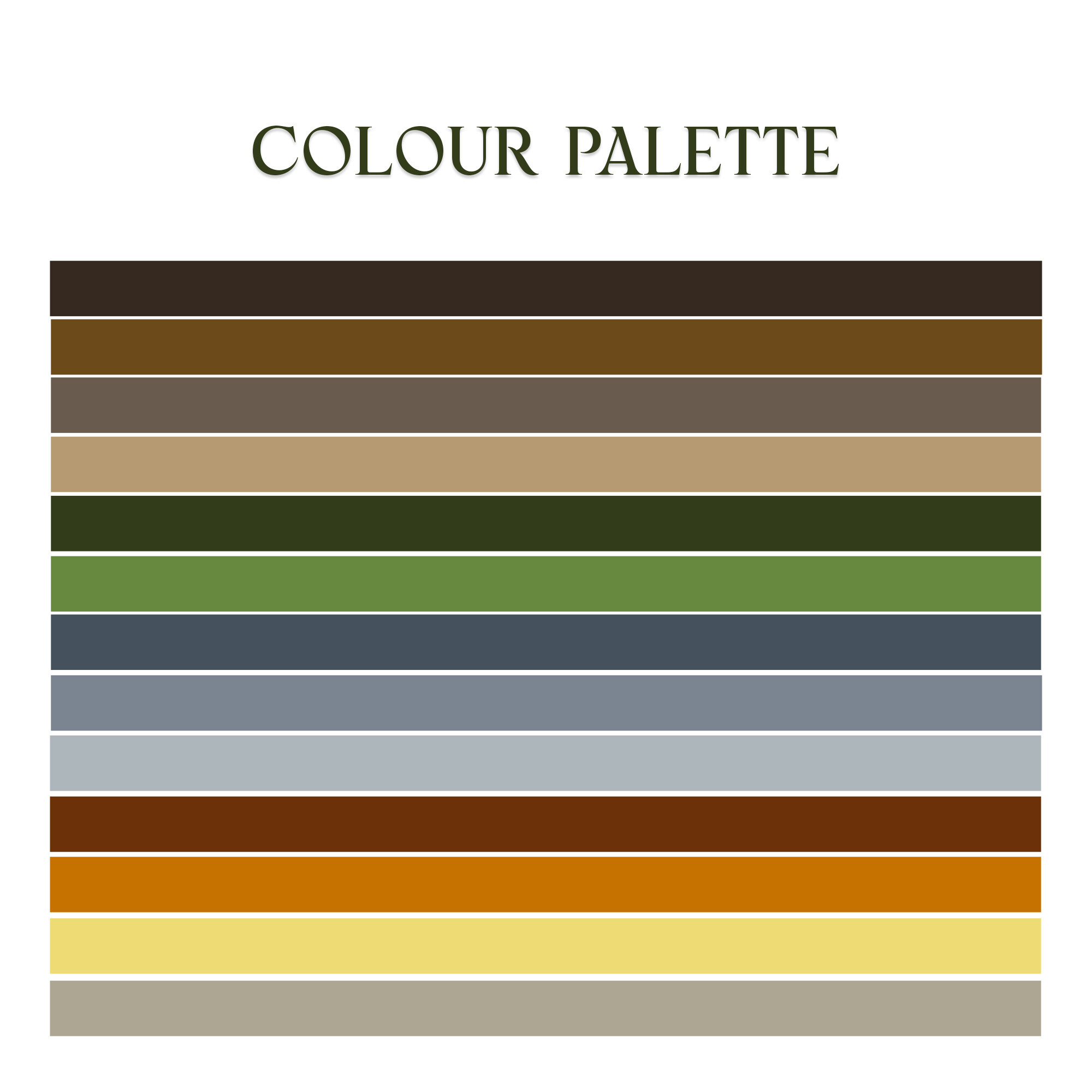
As interior designers, we are maestros who shape the scenarios where our clients' stories unfold. Nature is a fundamental element, providing inspiration, balance, and connection.
But how can you bring nature into your projects? Here are some tips for implementing Biophilic Design:
Incorporating nature into interior design and architecture is not just a passing trend but an approach that puts human beings - and their well-being - at the center of the equation. By adopting this philosophy in your projects, you will be shaping spaces and building a future in which the built spaces coexist in symbiosis with the natural world.
Did you like our tips? So, stay tuned to our blog for more information and curiosities from the universe of architecture, interiors, and construction! You can also follow us on Instagram, Facebook, and Pinterest for all updates and news.